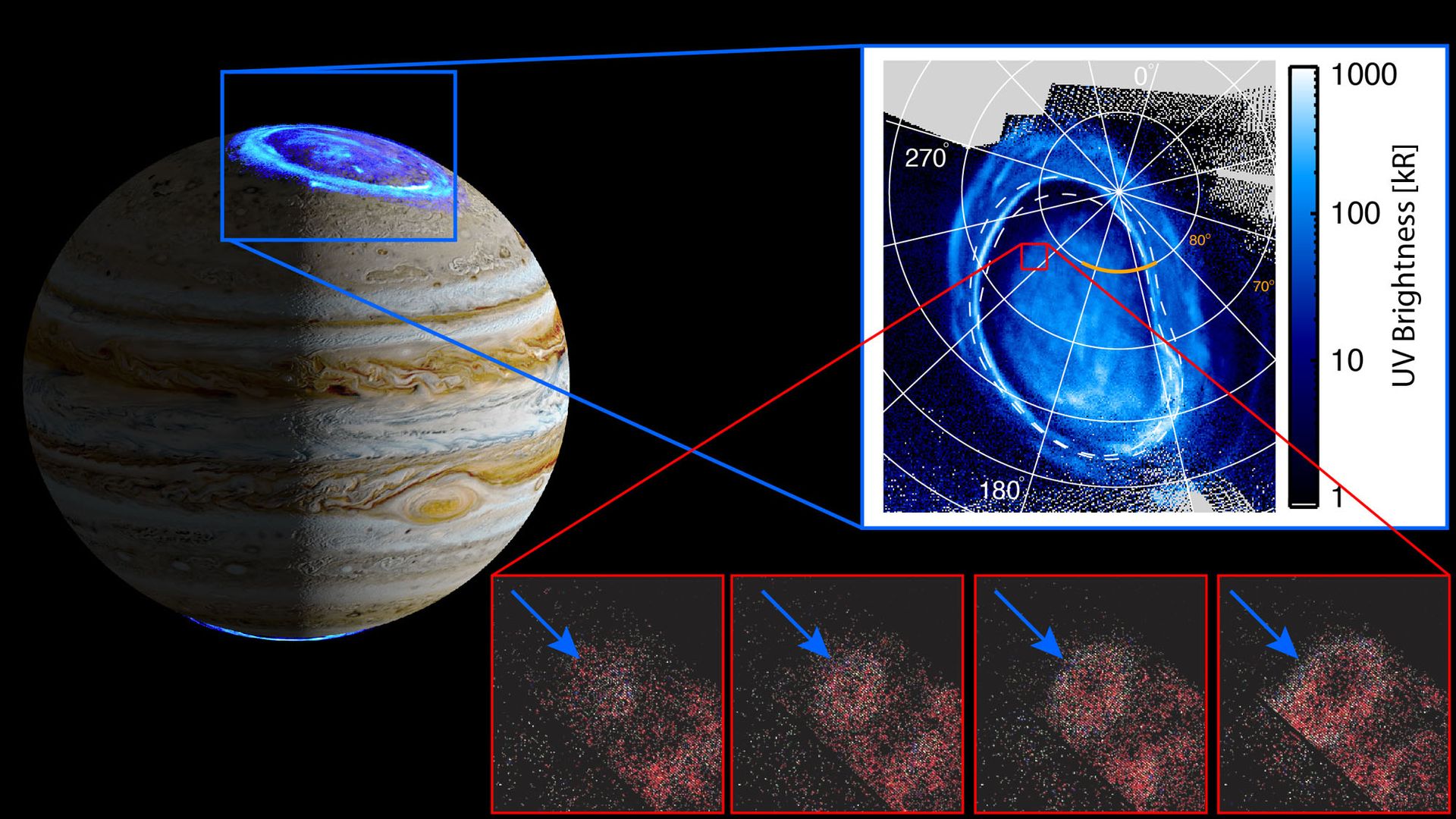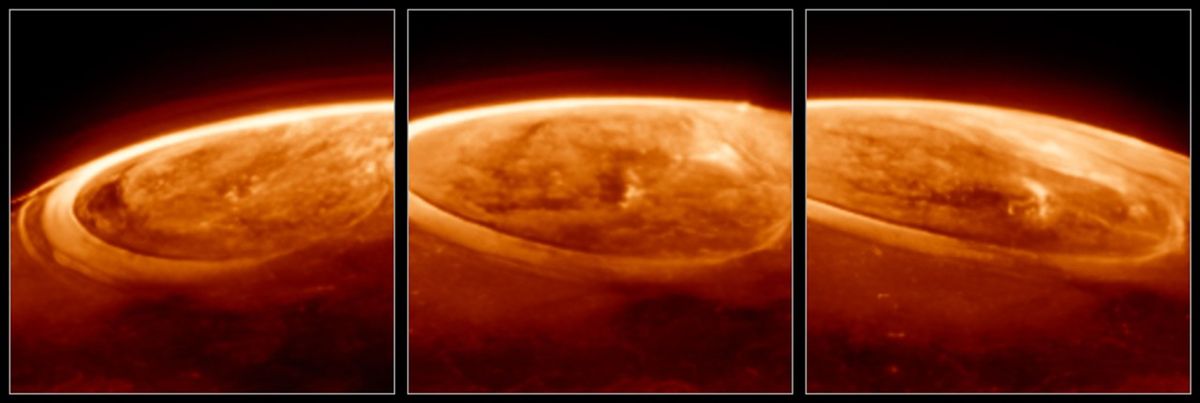🔭 Auroras on Jupiter exhibit previously unknown behavior
Follow us on Google News (click on ☆)
NASA's Juno mission, in orbit around Jupiter since 2016, has enabled the collection of valuable data on Jovian auroras. The Waves instrument captured electromagnetic signals produced by charged particles in the plasma, revealing previously unknown waves. These discoveries help us understand how magnetic fields protect planets from stellar radiation.

Faint auroral features detected by Juno, likely triggered by particles from Jupiter's magnetosphere.
Credit: NASA/SWRI/JPL-Caltech/SwRI/V. Hue/G. R. Gladstone/B. Bonfond
Auroras form when charged particles, guided by the planetary magnetic field, collide with the atmosphere. On Earth, this creates colorful lights visible at the poles. On Jupiter, auroras are much more powerful and emit mainly in ultraviolet and infrared, requiring special instruments to be observed.
Plasma, often called the fourth state of matter, is an ionized gas composed of electrons and ions. It behaves like a fluid but reacts strongly to magnetic fields. Around Jupiter, the most magnetized planet in the Solar System, plasma exhibits unique behaviors that do not occur on Earth.
The research team discovered that the density of plasma near Jupiter's poles is very low, while the magnetic field is extremely strong. This combination creates a new type of wave that begins as an Alfvén wave but transforms into a Langmuir mode. These waves influence how particles are channeled toward the polar regions.
On Jupiter, charged particles are directed straight toward the poles, producing auroras that are more concentrated and chaotic than on Earth. These extreme conditions may be common on the outer planets of the Solar System or on massive exoplanets.

Auroras on Jupiter captured by the James Webb Space Telescope in 2023.
Credit: NASA, ESA, CSA, Jonathan Nichols (University of Leicester), Mahdi Zamani (ESA/Webb)
Scientists continue to analyze data from Juno during its additional orbits. Each pass brings new information about plasma behavior under extreme conditions.
What is plasma and why is it important in space?
Plasma is a state of matter where atoms are so energized that they separate into electrons and electrically charged ions. It is often called the fourth state of matter, after solid, liquid, and gas.
In space, plasma is ubiquitous, making up most of the visible Universe, including stars and the interstellar medium. It behaves like a fluid but interacts strongly with magnetic fields, influencing phenomena such as auroras and solar winds.
On Jupiter, plasma is particularly dense and magnetized, creating unique conditions for the study of waves and particles. Understanding plasma helps scientists model space environments and predict space weather that can affect satellites and communications on Earth.
Research on Jovian plasma could also apply to other celestial bodies, such as brown dwarfs or exoplanets, expanding our knowledge of planetary systems.
How do magnetic fields protect planets?
Planetary magnetic fields act as invisible shields, deflecting charged particles from the solar wind or other cosmic sources. Without them, these particles could erode the atmosphere and expose the surface to harmful radiation.
On Earth, the magnetic field guides particles toward the poles, where they create the northern and southern lights. This process dissipates the energy of the particles in a relatively safe manner, protecting the biosphere and technology.
Jupiter has the most powerful magnetic field in the Solar System, generated by its rapidly rotating metallic core. It channels particles directly toward the poles, producing intense and concentrated auroras. This configuration differs from that of Earth and offers a natural laboratory for studying the magnetosphere.
Understanding these mechanisms helps develop strategies to protect future crewed missions in deep space, where radiation is a major threat to astronauts' health and equipment integrity.